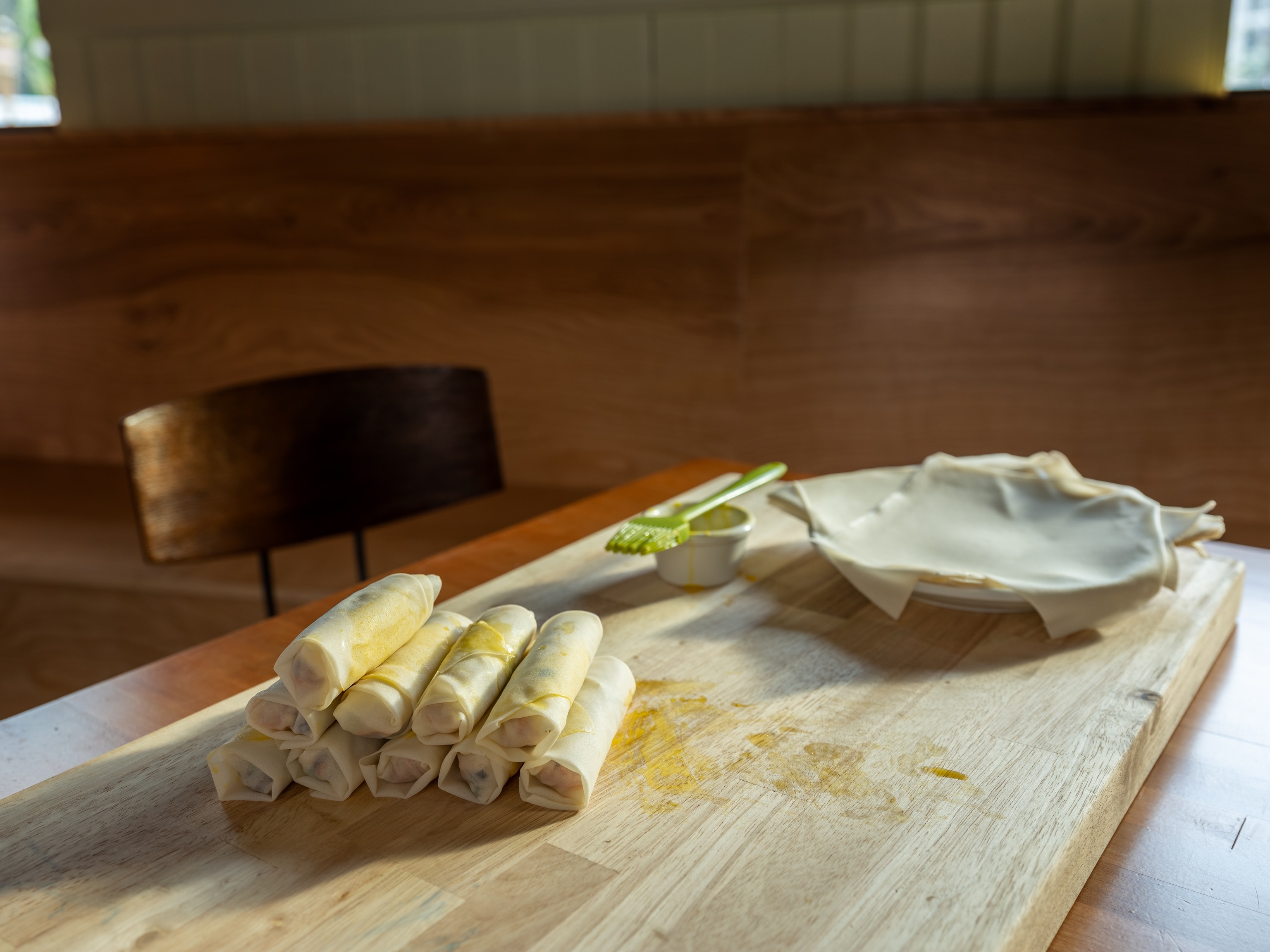Bike your way through an urban Texas adventure
Buffalo Bayou Park is a 160-acre oasis in the heart of Houston where Texas culture, nature, and history meet.
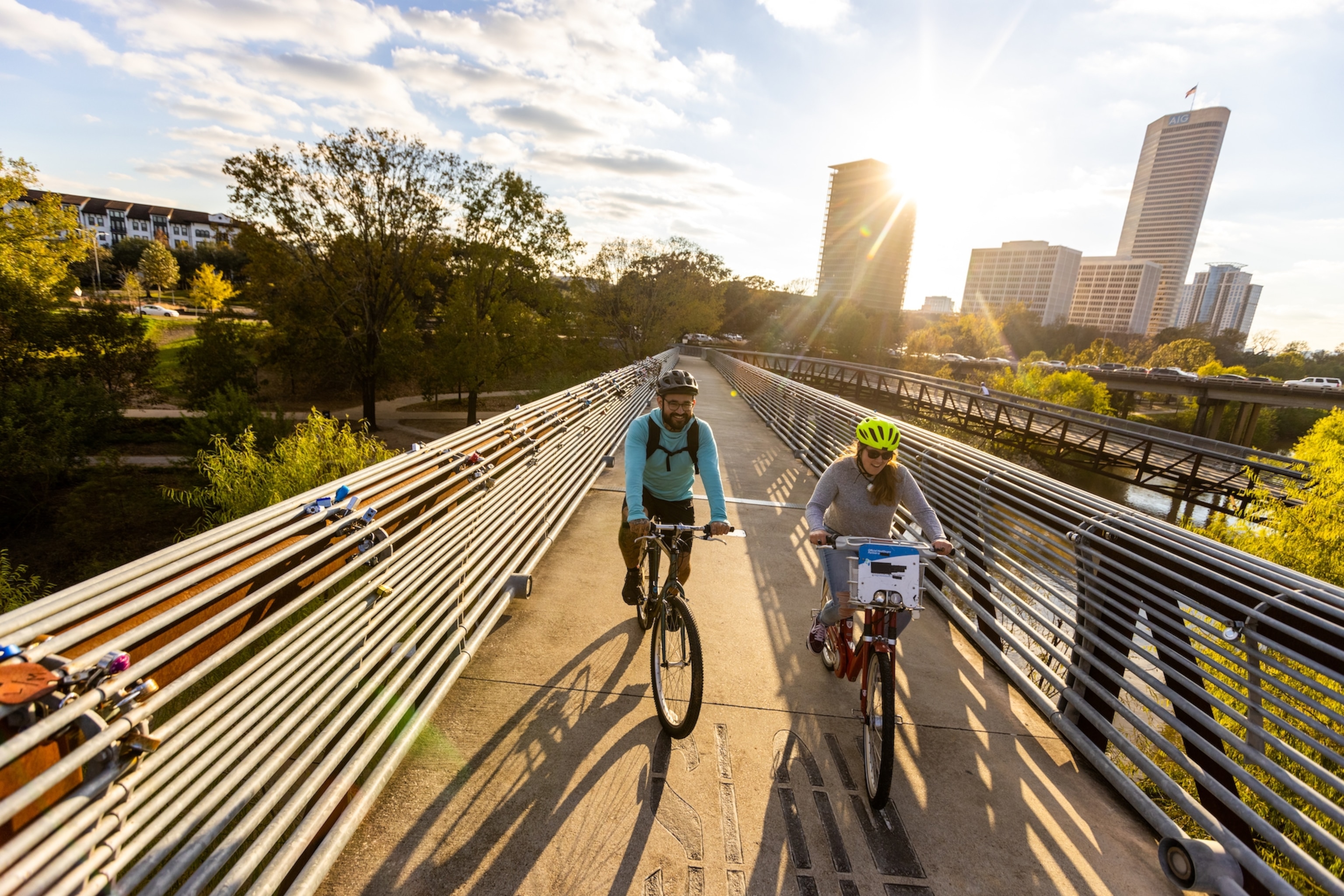
An urban greenspace just west of downtown Houston, Buffalo Bayou Park preserves and celebrates the city’s rich history, culture, and wildlife along the banks of the bayou. From an underground water reservoir turned public space, to a lake that once disappeared, and an impressive bat colony that emerges in the evenings, the park offers so much more than pretty views.
It’s a trove of fascinating stories, discoverable by miles of bike paths. So, head to The Water Works building at the entrance of the park to rent a bike from the Bayou Bike Rentals, then cruise along the waterway that put Houston on the map. Here are just a few landmarks to stop and explore as you ride.
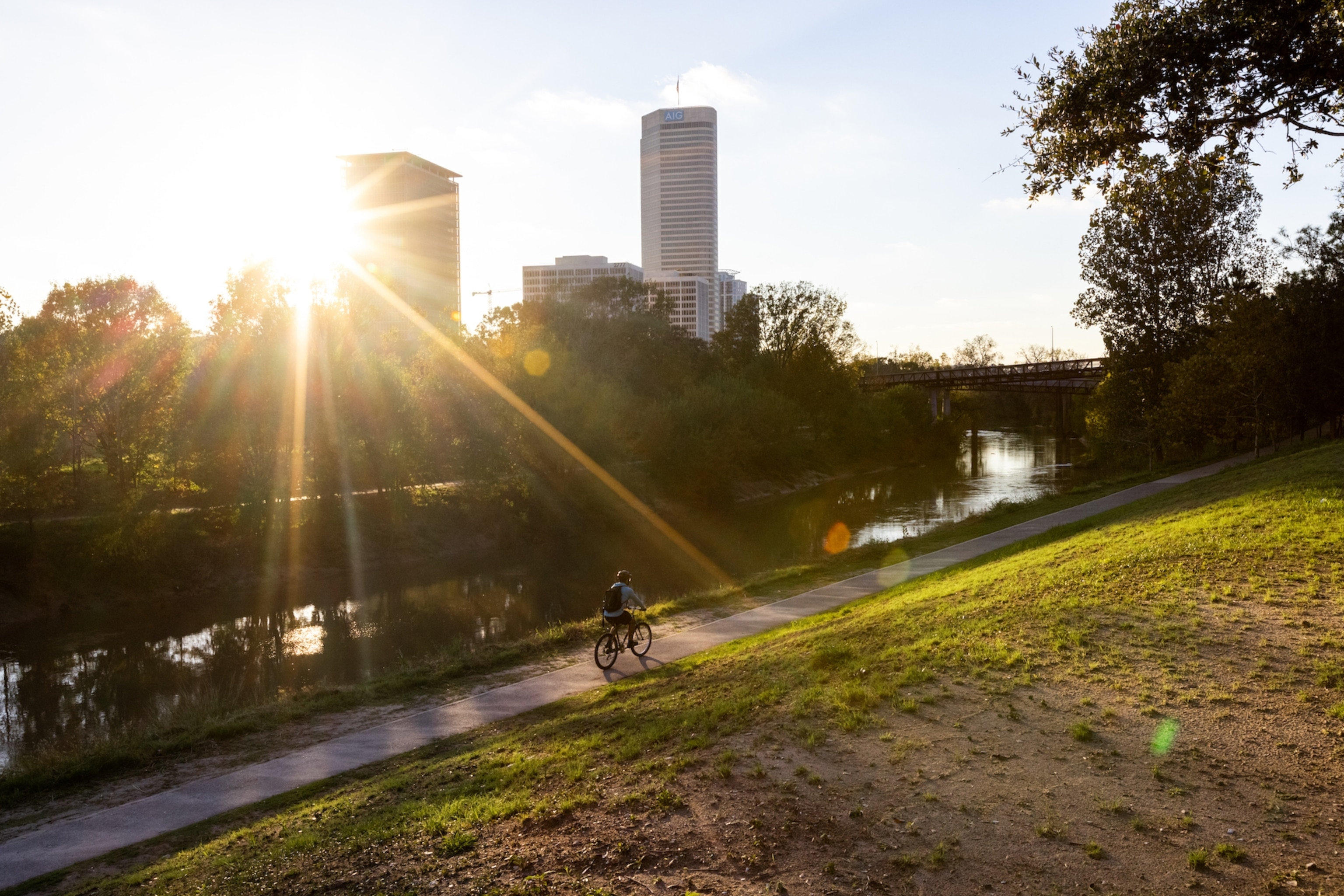
Buffalo Bayou Park Cistern
First up, the Buffalo Bayou Park Cistern. Walk through the entrance to the cistern and below the streets of Houston to an underground water reservoir. The length of one and a half football fields, the vast open space is supported by 221 columns that rise 25 feet from the reservoir floor. Depending on the day, tour the cistern to learn about its history and architecture, view an immersive art installation, or find your center through guided sound meditation.
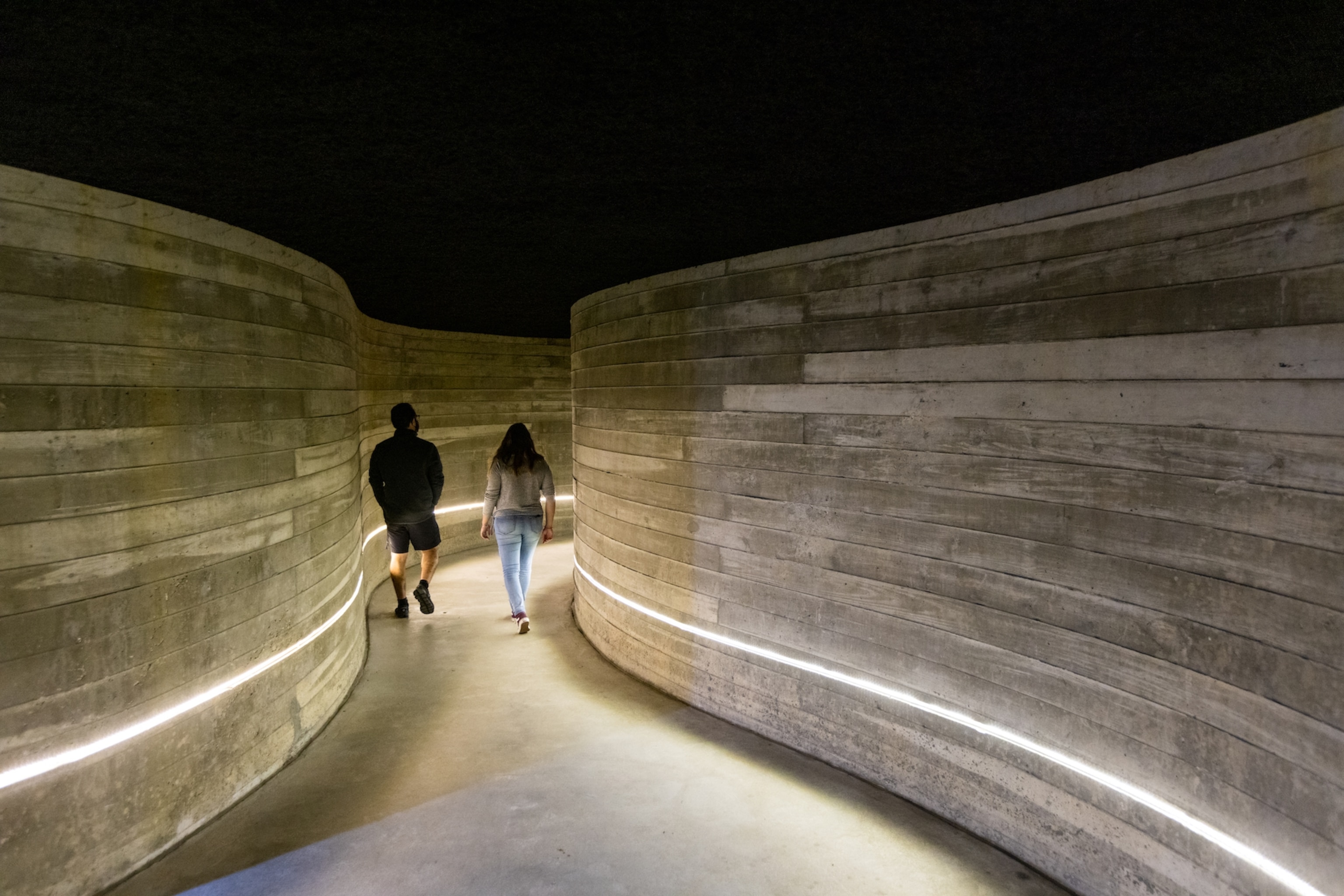
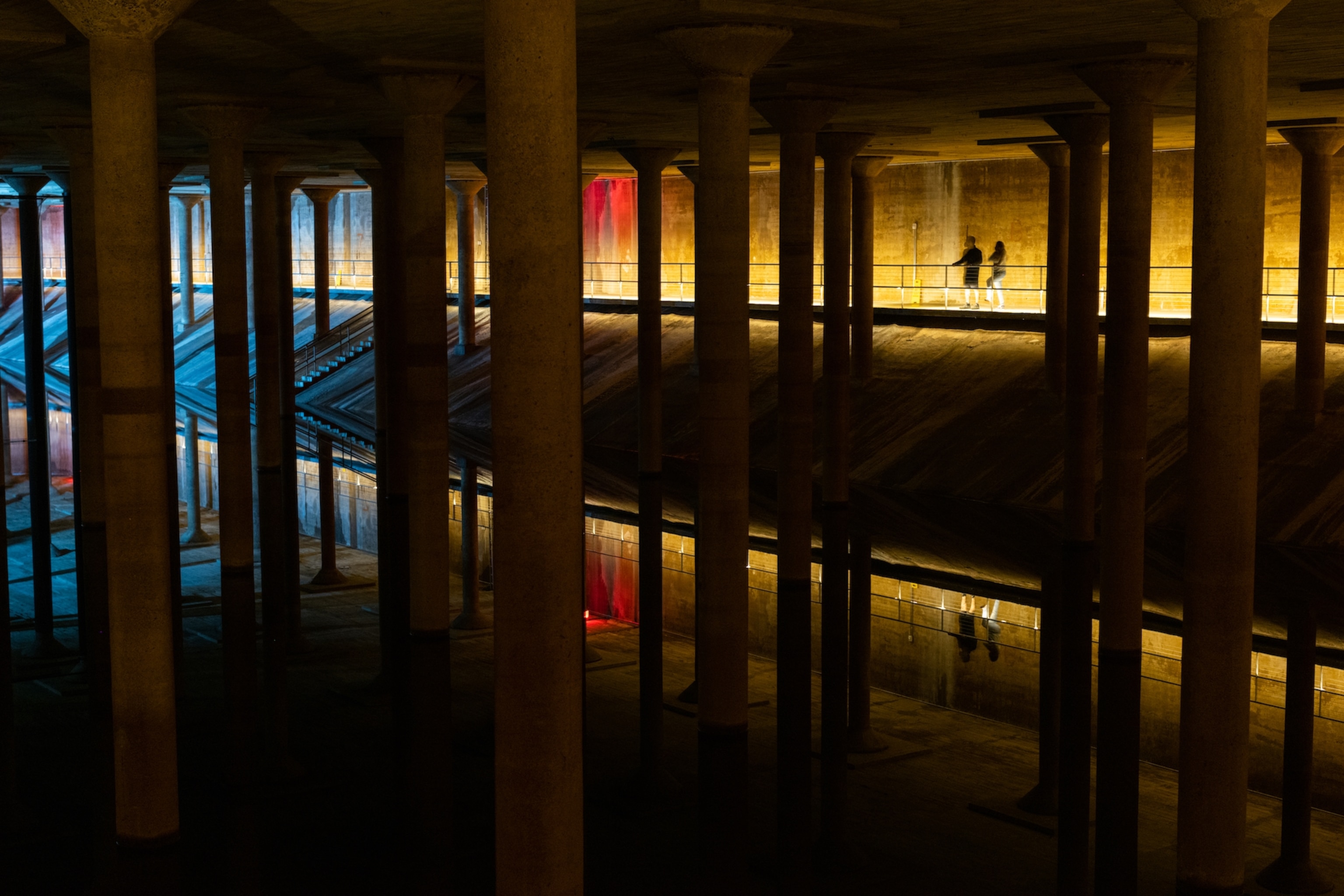
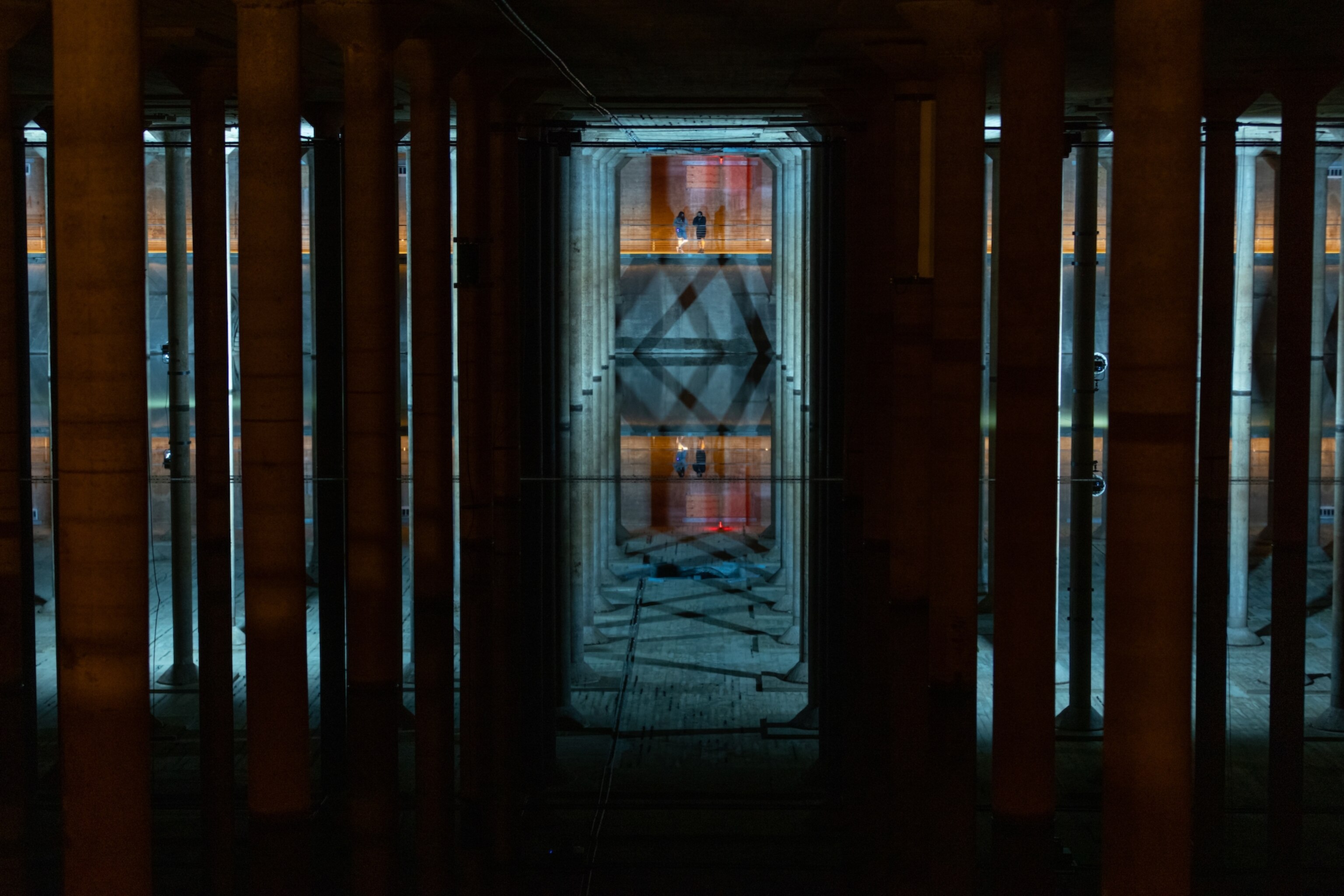
Back up at street level, grab a drink at Ella Coffee—a mobile trailer serving specialty coffee and freshly made pastries—before taking off again.
Inspiring Public Art
Follow the bike path west from the cistern and pedal past thought-provoking public art. Stand under Houston artist John Runnels' 20-foot stainless steel canoe sculpture at the Crosby Outfall entrance—or one of his other 11 canoes floating around the park. Then circle past renowned British artist Henry Moore’s large, abstract bronze cast sculpture in the middle of the greens.
Stop off near the Rosemont Bridge to see the striking “Tolerance” sculptures by Spanish artist Jaume Plensa. The seven stainless steel figures represent each of the seven continents and Plensa’s belief in the similarities between all people. Up on the bridge, take in sweeping views of the park and the skyline. You can also admire hundreds of colorful "love locks" that couples have secured to the railing (à la Pont des Arts in Paris) as a symbol of their unbreakable bond.
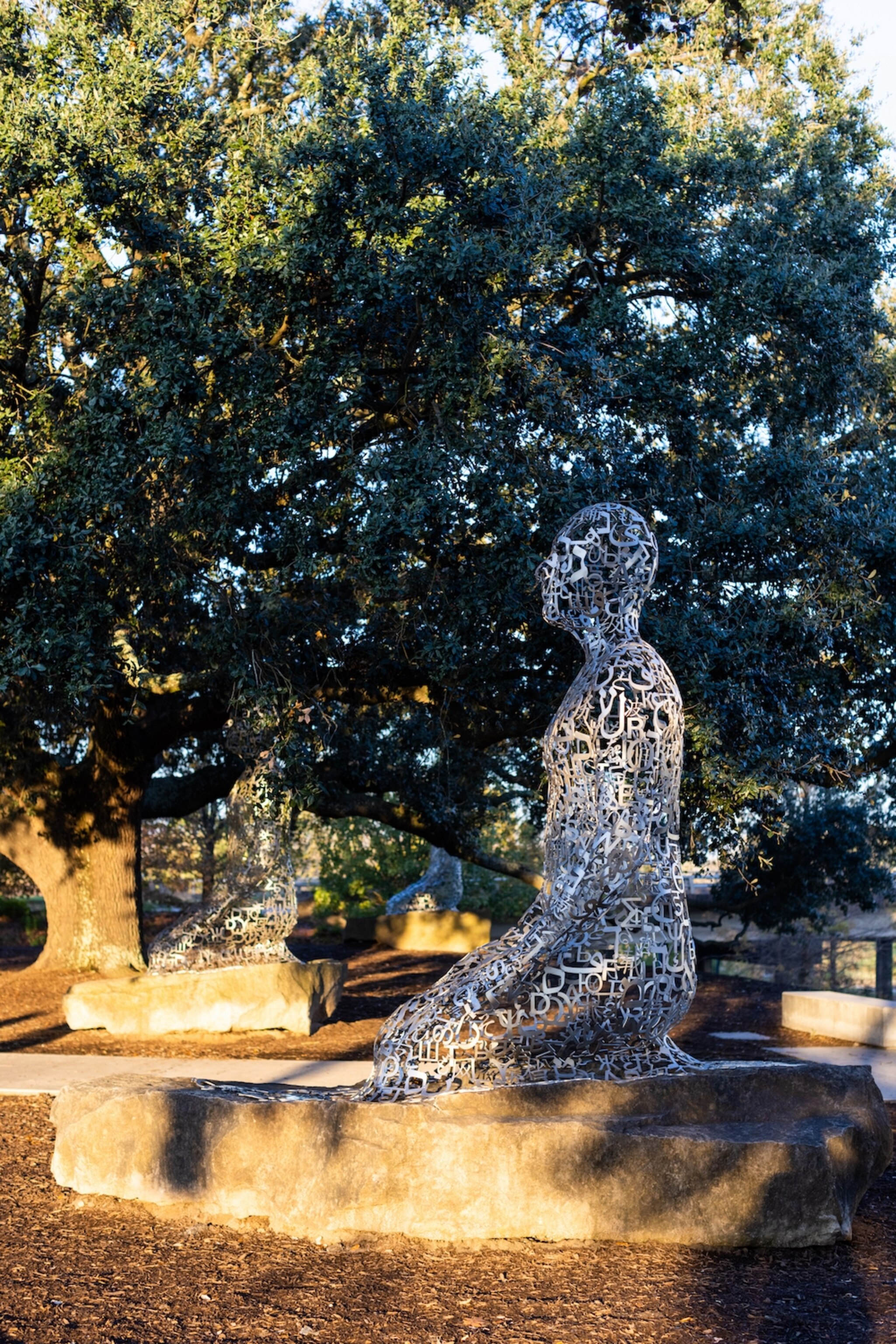
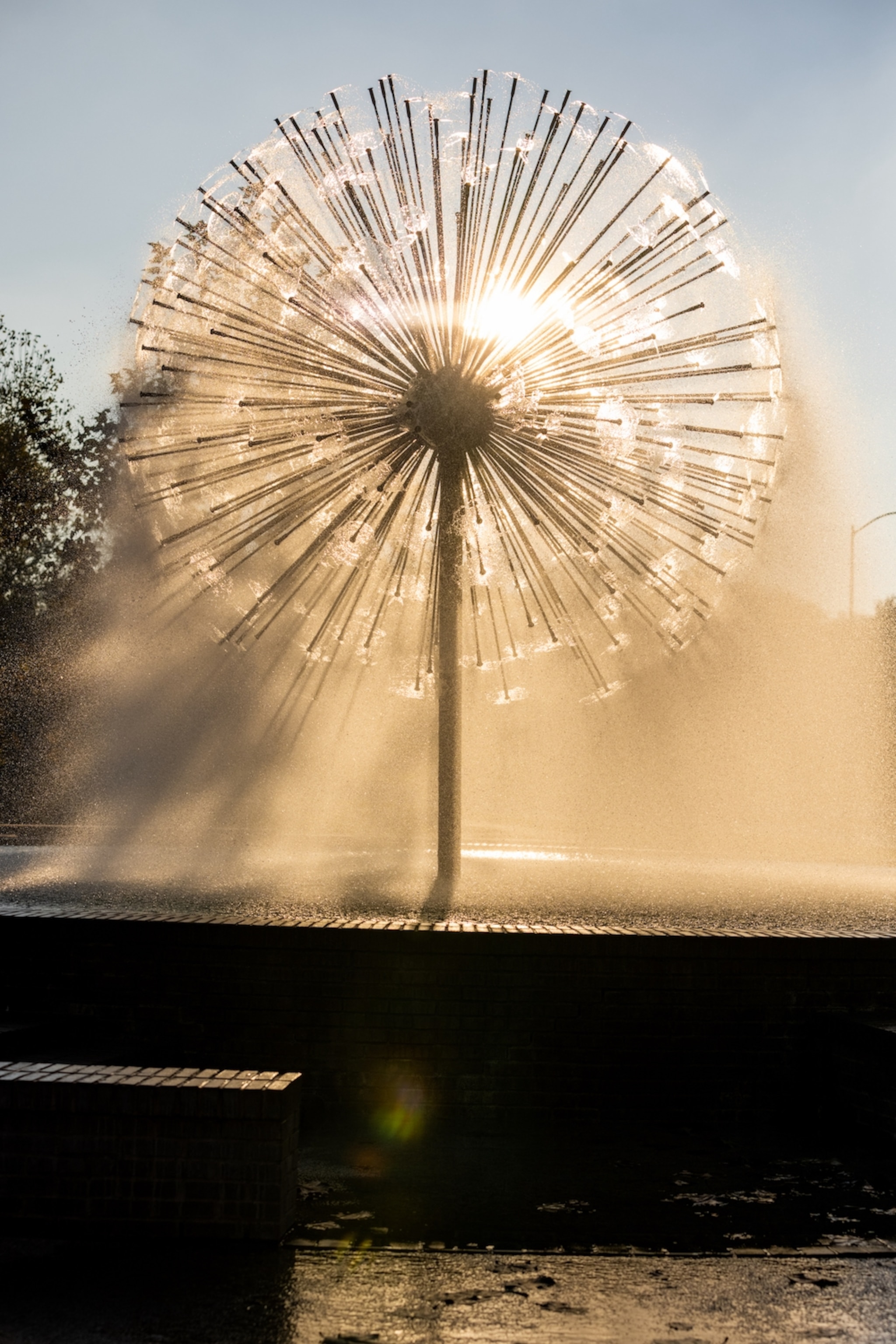
Finally, cool off at the Gus S. Wortham Memorial Fountain. Known to locals as the “Dandelion,” the functional sculpture is a starburst of brass pipes that delightfully sprays passing bikers, joggers, and dogs on hot days.
Lost Lake & Gardens
When it’s time for a break, pull over at Lost Lake—an appropriately named pond that disappeared in the 1970s after a dam broke. It was overrun by invasive plants and vines until it was restored (with a stronger dam) in 2015. Today, it’s a gathering place for locals and visitors alike.
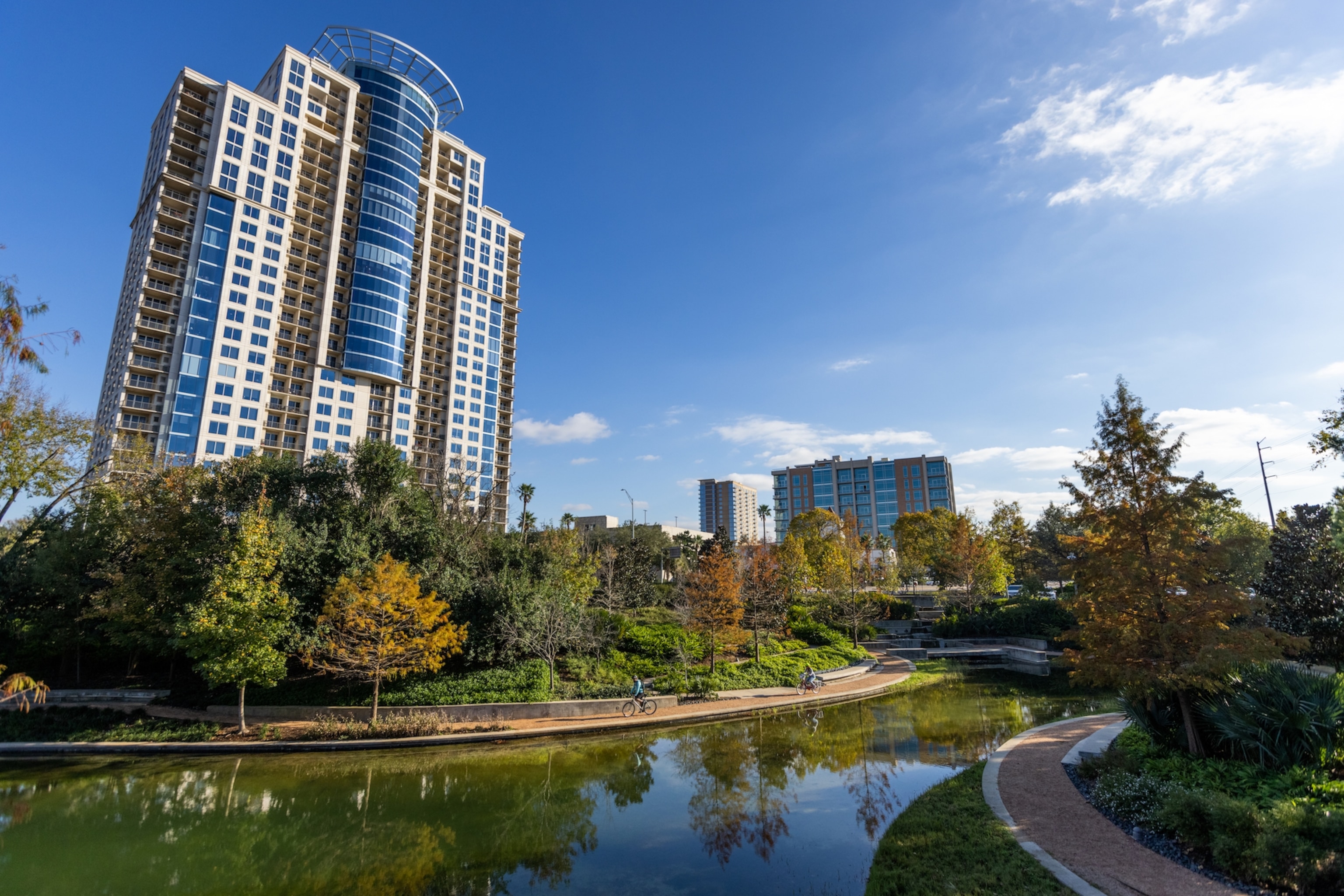
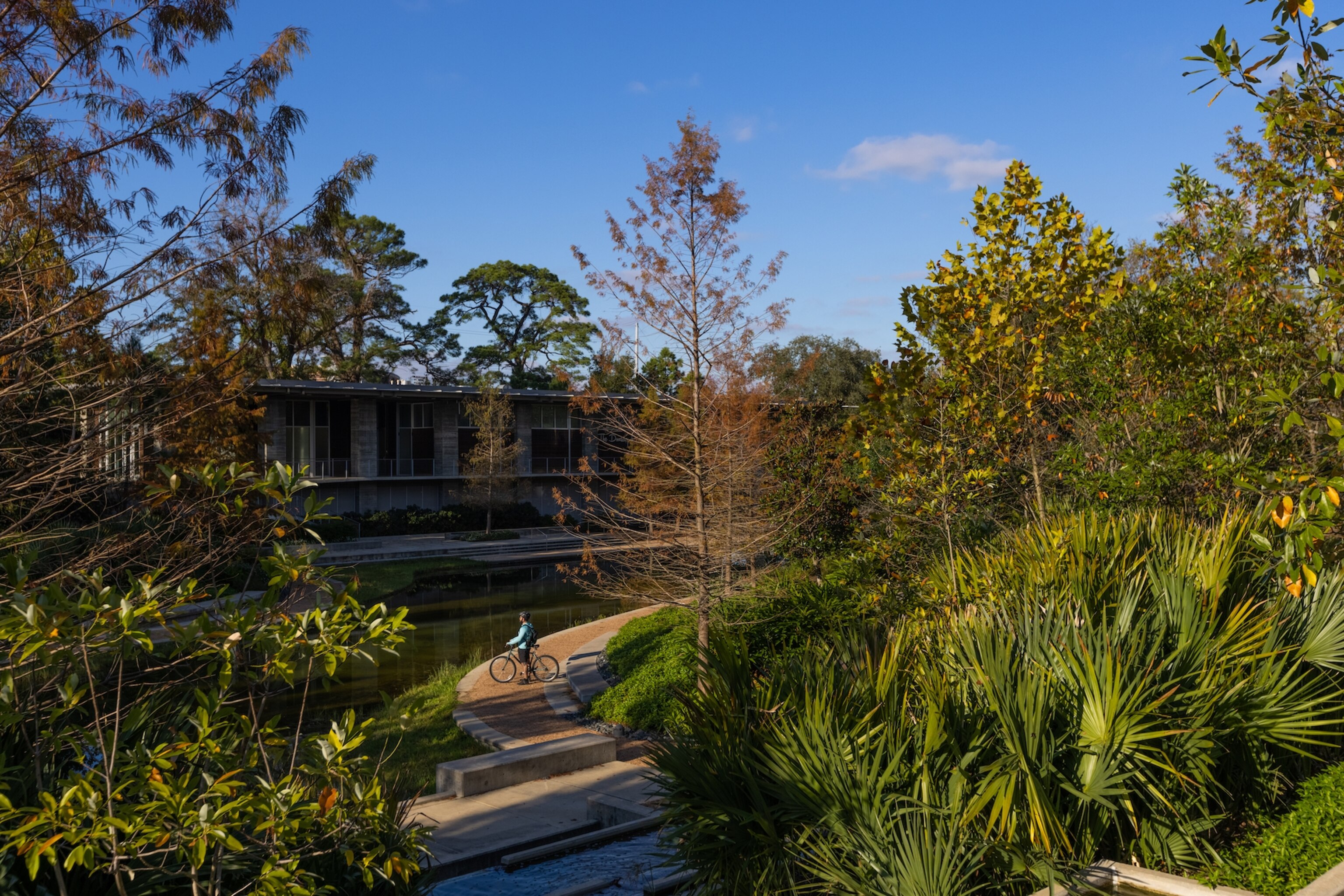
Wander through the lush wetlands that surround the pond and the perennial garden planted by the Garden Club of Houston. Enjoy a picnic or catch some much-needed shade under the many leafy trees.
Waugh Drive Bridge Bat Colony
A half hour before sunset, head to the Waugh Drive Bridge to watch more than 250,000 Mexican free-tailed bats fill the sky. As long as the temperature is above 50 degrees Fahrenheit, the bats will emerge from the structure's crevices around sunset, form a swirling vortex under the bridge, and take off east along the bayou.
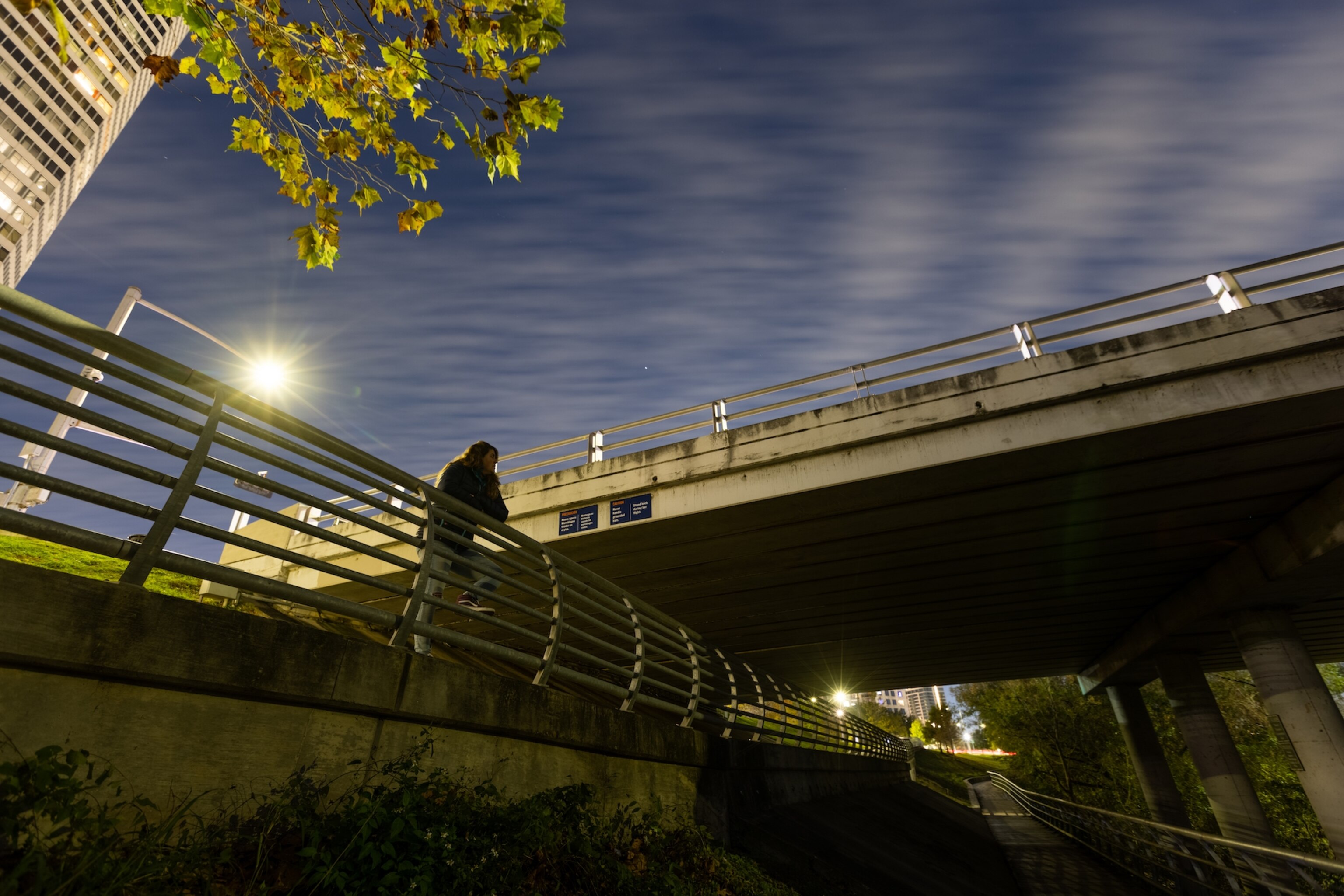
Grab a spot on the Waugh Drive Bridge observation deck or sit back on the grassy banks of the bayou northeast of the bridge to watch the bats disappear into the night sky. Or, stand by the “Dandelion” fountain on the sidewalk near the tree line to watch the colony fly directly overhead.
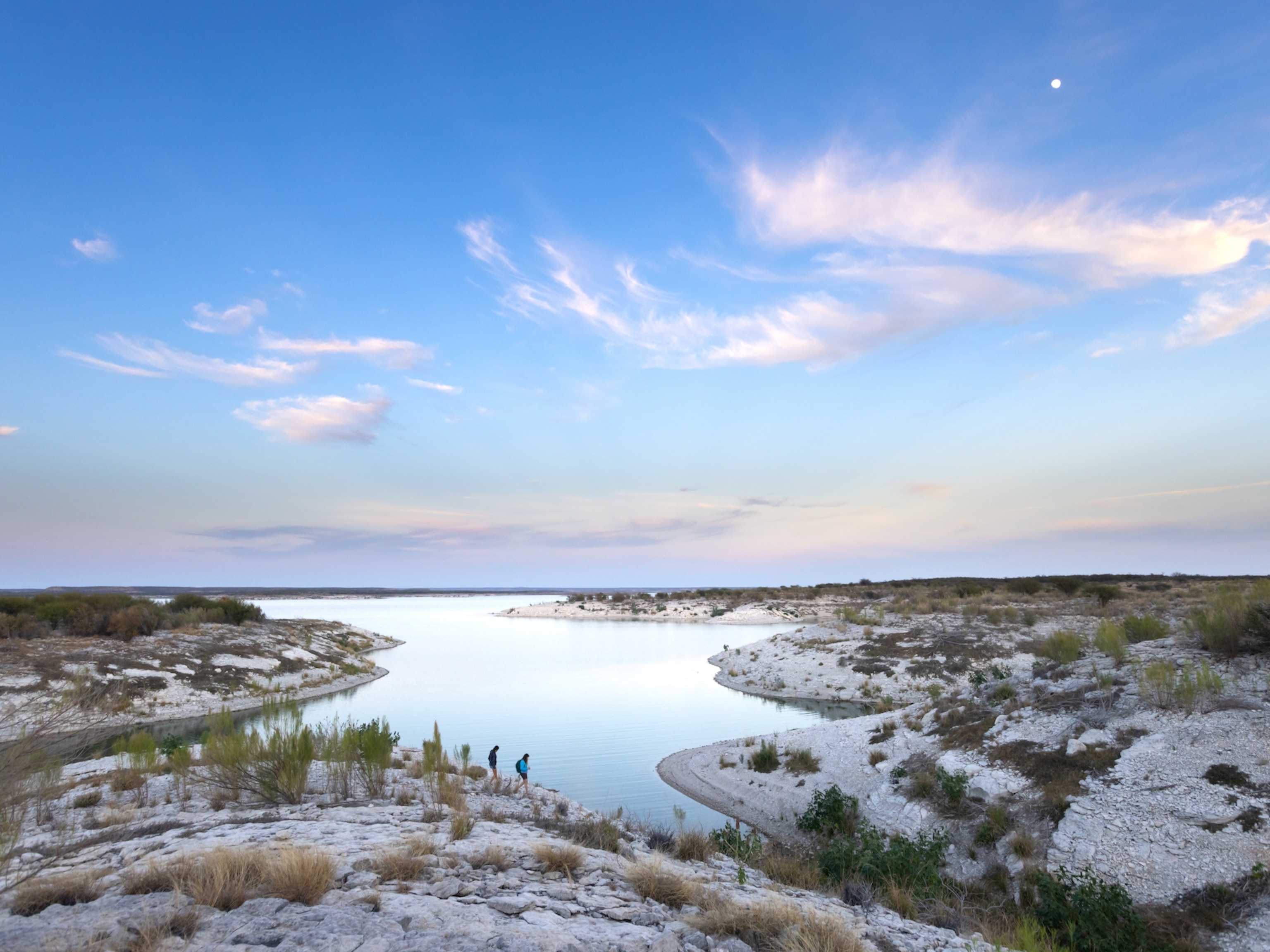
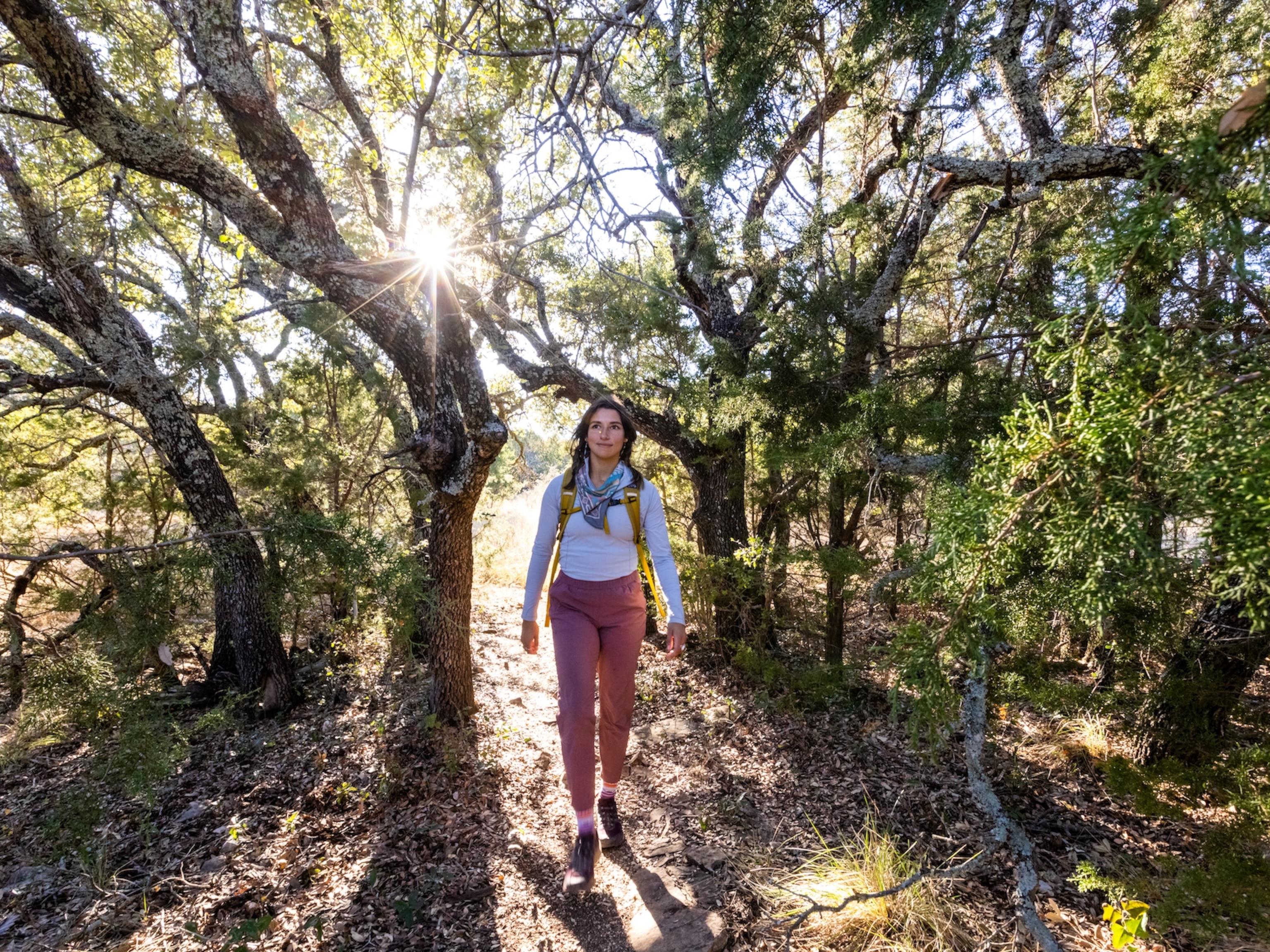
_4x3.jpg)

